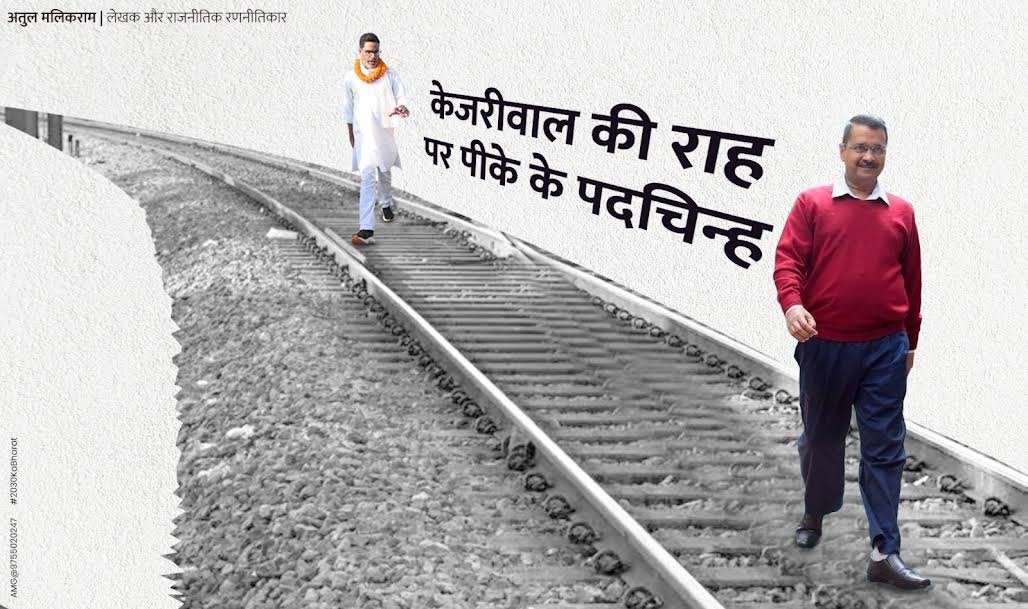Following Kejriwal's Footsteps: The Path of Prashant Kishor
- Atul Malikram (Political Strategist)

“Do we want to win the Bihar elections in 2025 or in 2024? If the people of Bihar desire it, there's no need to wait until 2025. We can settle this in the upcoming by-elections this November.”
These sharp, pointed remarks, aimed directly at several prominent figures in Bihar, are from Prashant Kishor, who announced his new political party, Jan Suraj, amidst a massive crowd on October 2nd. His revolutionary approach has not only energized thousands of activists connected to Jan Suraj but has also successfully engaged many progressive youth, women, and men in Bihar with a transformative ideology. However, if we analyze Kishor's aggressive stance on changing Bihar, several intriguing questions arise—most notably, are Kishor and Kejriwal following similar paths? Or can they be likened to two parallel railway tracks that never converge but always run alongside each other?
After nearly two years of foot marches, Prashant Kishor, who has previously worked as a professional election strategist, has decided to enter the electoral arena himself. During his journey, he has focused on issues like migration, poverty, and illiteracy, while also launching significant attacks on dynastic politics and casteism. These are traditional political issues that have long been entrenched in Indian politics, especially in Bihar. Keeping this in mind, Kishor strategically began to highlight the issue of liquor prohibition, linking the revenue losses from this ban to the need for reform in Bihar's education system and openly advocating for its removal. He has also made 'surveys' and 'smart meters' key electoral topics. His launch event aimed to convey that when Kishor enters the political arena, he won’t hold back, just like other politicians do.
Kishor's selection of candidates using an American-style model, along with his goal of delivering the final blow to the Nitish government in the upcoming assembly elections, has put him firmly in the spotlight in Bihar. This is reminiscent of how Arvind Kejriwal emerged as a new star in Delhi politics following the Anna Hazare movement in 2011.
From a political perspective, both Kejriwal and Kishor seem to be riding the same political horse. On the surface, one left a job at the UN while the other resigned from the income tax department, but a deeper look reveals that Kishor, having sipped from various political waters, has briefly taken Nitish Kumar as his political guru. Just as Kejriwal distanced himself from Anna Hazare, Kishor has now positioned himself as a challenge to Nitish. While Kejriwal never directly opposed Anna, his political ambitions inevitably set them at odds. On the other hand, through the establishment of the Indian Political Action Committee in 2013 and Citizens for Accountable Governance in 2014, Kishor has made it clear that he aims for a long struggle—one against the entire system, which includes the seats of many successors. This mirrors how Kejriwal sought to leverage the Lokpal Bill movement against corruption, paving the way for his rise to power in Delhi.
Kishor has worked as an election strategist for over half a dozen political parties, including the BJP and JD(U). However, it's crucial to note that just as Anna's movement spawned several new leaders, Kishor's ongoing foot marches have planted seeds for many ambitious politicians. By connecting with over 100 IAS and IPS officers and including several former MPs and influential leaders from opposition parties in his team, Kishor is laying the groundwork for a new political landscape in Bihar.
साभार :
© CopyRight Pressnote.in | A Avid Web Solutions Venture.






